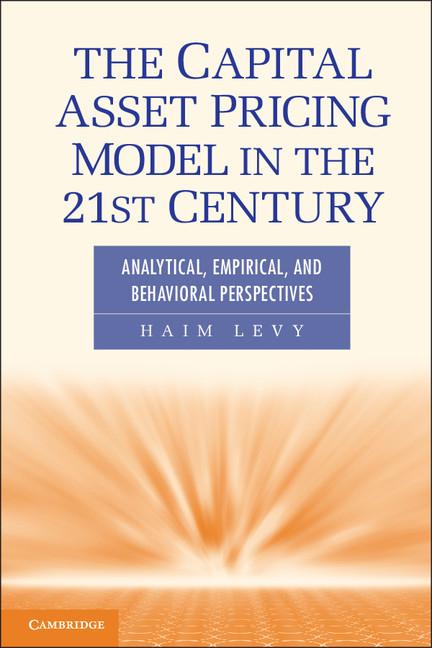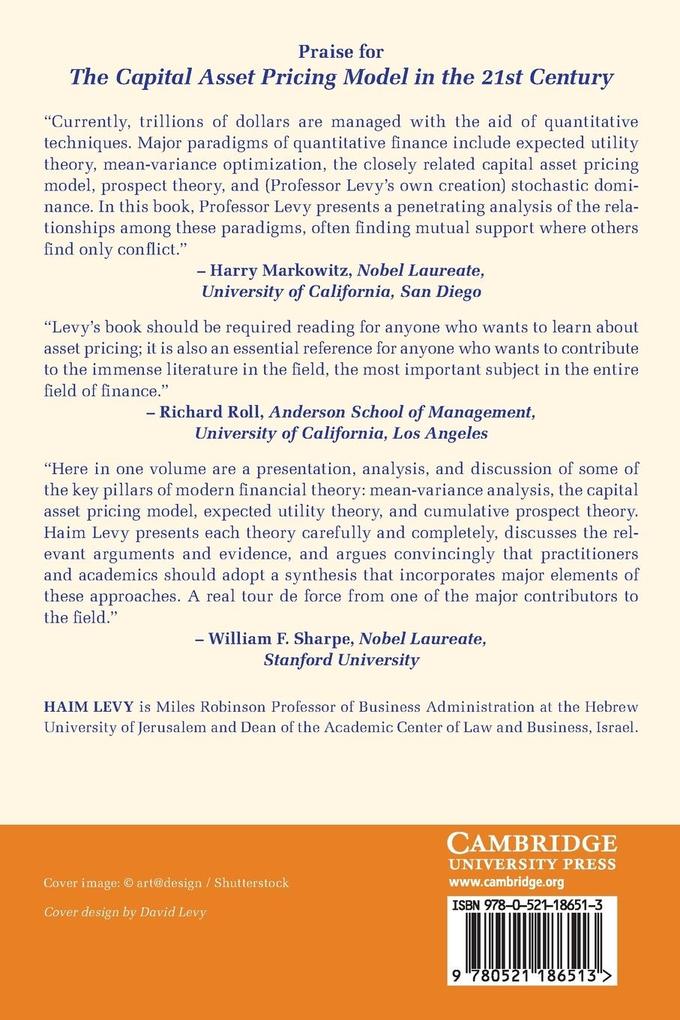
Zustellung: Di, 24.06. - Fr, 27.06.
Versand in 6 Tagen
VersandkostenfreiBestellen & in Filiale abholen:
This book bridges behavioral economics and the classical models in finance to show that there is no contradiction between them. Behavioral economics and the classical models in finance, such as the Capital Asset Pricing Model (CAPM), seemingly contradict each other, creating a teaching and a research dilemma to professors in finance and economics. This tension is particularly strong for professors who teach both the CAPM and behavioral finance. This book bridges prospect theory and the classical models in finance to show that there is no contradiction between them.
"Project Theory and the classical models in finance (e.g., the CAPM) seemingly contradict each other, creating a teachin and a research dilemma to professors in finanace and econommics, This tension is particualrly strong for professors who teach both the CAPM and behavioral finance. This book bridges between Prospect Theory and the Classical Models in finance showing that there is no contradictions between them"--
Inhaltsverzeichnis
1. Overview; 2. Expected utility theory; 3. Expected utility and investment decision rules; 4. The mean-variance rule; 5. The capital asset pricing model (CAPM); 6. Extensions of the CAPM; 7. The CAPM cannot be rejected: empirical and experimental evidence; 8. Theoretical and empirical criticisms of the M-V rule; 9. Prospect theory and expected utility; 10. Cumulative decision weights: no dominance violation; 11. M-V rule, the CAPM, and the cumulative prospect theory: coexistence.
Produktdetails
Erscheinungsdatum
09. Februar 2012
Sprache
englisch
Seitenanzahl
458
Autor/Autorin
Haim Levy
Verlag/Hersteller
Produktart
kartoniert
Gewicht
738 g
Größe (L/B/H)
229/152/27 mm
ISBN
9780521186513
Entdecken Sie mehr
Pressestimmen
'Currently, trillions of dollars are managed with the aid of quantitative techniques. Major paradigms of quantitative finance include expected utility theory, mean-variance optimization, the closely-related capital asset pricing model, prospect theory, and (Professor Levy's own creation) stochastic dominance. In this book, Professor Levy presents a penetrating analysis of the relationships among these paradigms, often finding mutual support where others find only conflict.' Harry Markowitz, Nobel Laureate, University of California, San Diego
Bewertungen
0 Bewertungen
Es wurden noch keine Bewertungen abgegeben. Schreiben Sie die erste Bewertung zu "The Capital Asset Pricing Model in the 21st Century" und helfen Sie damit anderen bei der Kaufentscheidung.









